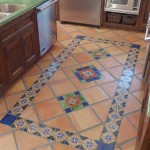```html
Can You Use The Same Tile On Floor And Shower Walls?
Choosing the right tile for bathroom renovations often involves considering aesthetics, functionality, and budget. One common question that arises during this process is whether the same tile can be used on both the floor and shower walls. The answer, while generally affirmative, requires careful consideration of several factors to ensure safety, longevity, and the desired aesthetic outcome.
Using the same tile throughout a bathroom, including the floor and shower walls, can create a cohesive and visually appealing design. This approach can simplify the selection process, potentially reduce material costs, and streamline installation. However, not all tiles are suitable for every application. Understanding the properties and requirements of different tile types is crucial to making an informed decision.
Key Point 1: Slip Resistance and Safety
The primary concern when using the same tile on both the floor and shower walls is slip resistance. Floors, particularly in wet areas like showers, require a tile with a high coefficient of friction (COF) to minimize the risk of slipping and falling. Shower walls, while not subject to the same level of foot traffic, should also be considered for their ability to maintain a secure grip and prevent soap scum buildup that can further reduce traction.
The COF is a measure of the tile's resistance to slipping. A higher COF indicates a greater resistance to slipping. For floors, especially in wet areas, a COF of 0.50 or higher is generally recommended by industry standards like the Americans with Disabilities Act (ADA). This ensures a reasonable level of safety for users. Tiles marketed as "slip-resistant" or "anti-slip" typically have a higher COF.
Consider the texture of the tile. Textured tiles, such as those with a matte finish or a slightly uneven surface, generally offer better slip resistance than smooth, polished tiles. Polished tiles, while visually appealing, can become extremely slippery when wet and are generally not recommended for shower floors or other areas prone to moisture.
Different tile materials offer varying levels of slip resistance. Porcelain and ceramic tiles are commonly used in bathrooms, and their slip resistance can be enhanced through texturing or the application of a slip-resistant coating. Natural stone tiles, such as slate or travertine, often have a naturally textured surface that provides good traction. However, some natural stones may require sealing to prevent water absorption and maintain their slip resistance over time.
When selecting a tile, it is essential to check the manufacturer's specifications for the COF. This information is usually available on the tile sample or in the product literature. Consulting with a tile professional can also provide valuable insights into the suitability of a particular tile for specific applications.
Key Point 2: Material Suitability and Water Absorption
Another crucial consideration is the material of the tile and its water absorption rate. Tiles used in shower installations are constantly exposed to water and moisture, so selecting a material that is resistant to water damage is essential. Porous tiles can absorb water, leading to staining, cracking, and the growth of mold and mildew.
Porcelain tile is generally considered the best choice for both floors and shower walls due to its low water absorption rate (typically less than 0.5%). This makes it highly resistant to water damage and suitable for wet environments. Ceramic tile is another option, but it typically has a higher water absorption rate than porcelain. If using ceramic tile in a shower, it is essential to ensure that it is properly sealed to prevent water penetration.
Natural stone tiles, while aesthetically pleasing, can be more porous than porcelain or ceramic. Some natural stones, such as granite, are relatively non-porous and can be used in showers with proper sealing. Other natural stones, such as marble or limestone, are more porous and may require more frequent sealing to prevent water damage and staining.
The sealing process involves applying a protective coating to the tile to prevent water from penetrating the surface. Sealants are available in various types, including penetrating sealants and surface sealants. Penetrating sealants are absorbed into the tile and provide protection from within, while surface sealants create a protective layer on the surface of the tile. The choice of sealant will depend on the type of tile and the specific requirements of the installation.
Proper grouting is also essential to prevent water penetration. Grout fills the spaces between tiles and helps to create a watertight seal. Epoxy grout is a good choice for shower installations because it is non-porous and resistant to water damage, staining, and mold growth. Cement-based grout is a more traditional option, but it is more porous than epoxy grout and may require sealing to prevent water penetration.
Key Point 3: Aesthetic Considerations and Design
While safety and functionality are paramount, aesthetic considerations also play a significant role in tile selection. Using the same tile on the floor and shower walls can create a unified and harmonious look, but it is important to consider the overall design and the desired aesthetic effect.
Consider the size and shape of the tile. Larger tiles can create a more seamless and modern look, while smaller tiles can add visual interest and texture. Using the same size tile on both the floor and shower walls can create a sense of continuity, while using different sizes can add visual contrast.
The color and finish of the tile can also significantly impact the overall aesthetic. Light-colored tiles can make a small bathroom feel larger and brighter, while dark-colored tiles can create a more dramatic and luxurious feel. Matte finishes tend to be more forgiving of imperfections and easier to clean, while glossy finishes can add a touch of elegance but may show water spots and fingerprints more easily.
Grout color can also play a significant role in the overall design. Using a grout color that matches the tile can create a seamless look, while using a contrasting grout color can highlight the shape and pattern of the tile. Consider the maintenance requirements of different grout colors. Lighter grout colors may require more frequent cleaning to prevent staining.
The overall style of the bathroom should also be considered. Using the same tile throughout can be a good choice for a minimalist or contemporary design, while a more eclectic or traditional design may benefit from using different tiles on the floor and shower walls. Adding accent tiles or decorative elements can also enhance the visual appeal of the bathroom.
Beyond the tile itself, the layout and installation pattern can greatly affect the final appearance. Consider running the same tile pattern from the floor up the shower wall for continuity, or opting for a different pattern to delineate the spaces. Herringbone, stacked, or offset patterns can add visual interest and style. Careful planning and professional installation are essential to achieve the desired aesthetic outcome.
In summary, using the same tile on the floor and shower walls is feasible with careful consideration of safety, material properties, and design preferences. Prioritizing slip resistance on the floor, selecting water-resistant materials, and thoughtfully planning the aesthetic aspects are key to a successful and long-lasting bathroom renovation.
```
Bathroom Tile Idea Use The Same On Floors And Walls
Slice Of Style Three Ways To Use The Same Tile Throughout Updated Nov 2024

Tiles Talk Mix And Match 6 Ways To Achieve Bathroom Bliss Perini

Can You Use Porcelain Floor Tiles On Shower Walls Stone Tile Depot

Tile Shower Floor Or Walls Maximizing Aesthetics With Bathroom China Ceramics Solution

6 Mistakes To Avoid With Shower Tile Daltile

Tiles Talk Mix And Match 6 Ways To Achieve Bathroom Bliss Perini

How To Choose The Best Tile For Your Shower A Bathroom Remodel Guide

4 Simple Tips For Choosing Tiles Your Bathroom Jlt Renovations
Slice Of Style Three Ways To Use The Same Tile Throughout Updated Nov 2024
Related Posts








